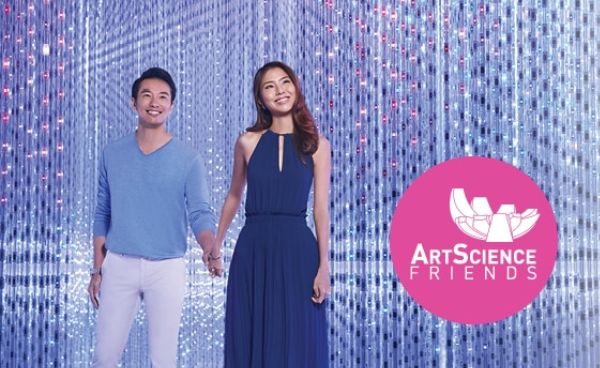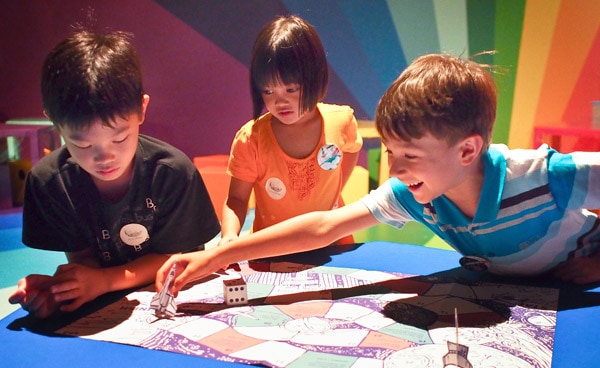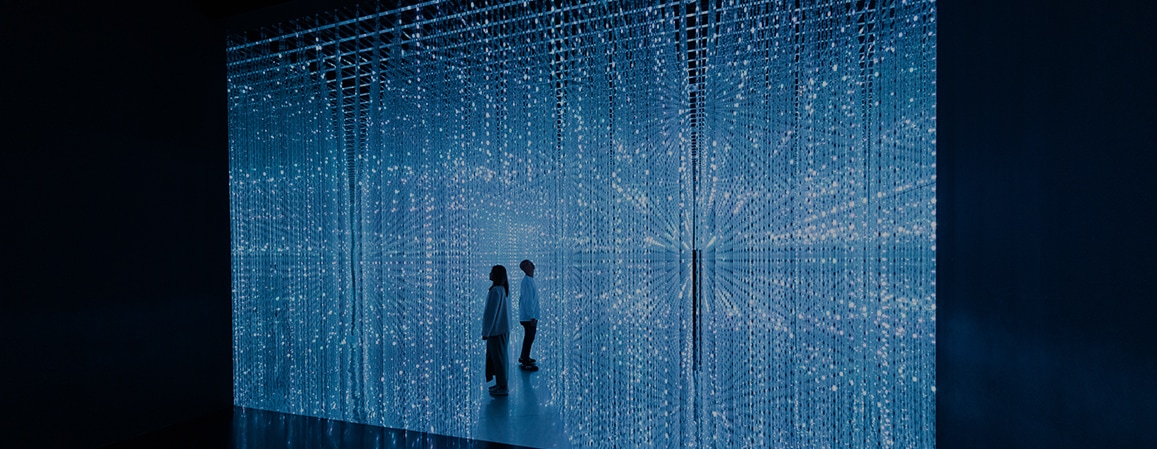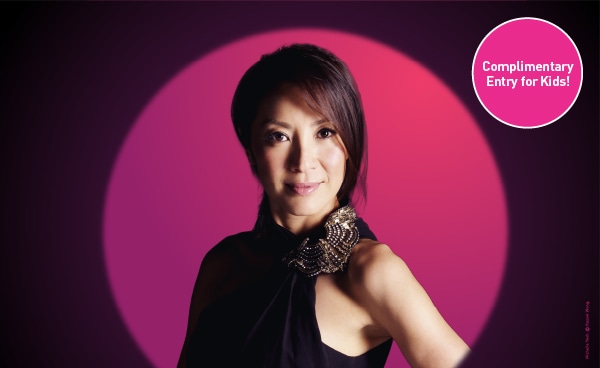
EXHIBITION
Goddess:
EXHIBITION
Goddess:
Brave. Bold. Beautiful.
From Michelle Yeoh performing her own martial arts stunts and Anna Tsuchiya subverting the enduring stereotypes of Japanese cinema, to Laverne Cox championing the rights of marginalised communities, these screen legends possess inspiring qualities that are relevant to us all.
Featuring behind-the-scenes footage, sketches, and original costumes, including those worn by Marilyn Monroe and Chinese movie star Zhang Ziyi, Goddess takes you on a journey through the lives of the stars from classic Hollywood to the modern day.
The exhibition highlights cinematic achievements from Hollywood, Hong Kong, Bollywood and beyond. From martial arts styles that crossed over to American action movies and the impact of the golden age of Malay cinema in Singapore, Goddess demonstrates the legacy of film – that extends far beyond the silver screen.
Goddess was developed and curated by ACMI, Australia’s national museum of screen culture. This new iteration of the exhibition, created in collaboration with ArtScience Museum, casts a powerful spotlight on Asian film luminaries. It is part of ArtScience Museum’s Year of Extraordinary Women.
Michelle Yeoh. © Russel Wong.
Laverne Cox, © Joshua Kissi, Courtesy Atrbute.
© 2007 SAKURAN Film Committee © Moyoco Anno/Kodansha.
Maggie Cheung. © Russel Wong.
![]() Admission Times
Admission Times
(Last entry at 6pm)
Ticketed Admission
Singapore Residents:
Adult: S$20
Child: S$16
Tourists:
Adult: S$23
Child: S$18
Explore the Exhibition
-

In Her Words
-

Crafting the Ideal
-

Breaking the Binary
-

Dangerous Women
-

Weaponising Glamour
-

Cut from the Same Cloth
-

Fighting Back
-

Walk out with a Goddess
-
In Her Words
In Her Words is a soundscape by composer and music producer Chiara Costanza. Costanza sampled talk shows, movies, acceptance speeches and interviews to create this work. It features the voices of many stars across time foregrounding these women's words.
In the male-dominated film industry, when women raise their voices, it’s often seen as an act of rebellion and solidarity. In Christmas in Connecticut (1945), American actress Barbara Stanwyck declared she was “tired of being pushed around… being told what to do… dancing to everyone else’s tune.” She could very well be speaking on behalf of most women that Hollywood has labelled as stars! Since the birth of cinema, women have been described as beautiful, glamorous, marvellous and magnificent. However, they’ve also been forced to consider how they look and even who they are.
Actresses have often had to defy expectations and the influence of the industry to make their mark and stake their claims. Through shared experiences, their collective voices over time form a cultural legacy. There is a continued need to acknowledge and profile the contributions of women in film, now and for generations to come.
Featured artworks
4artwork-
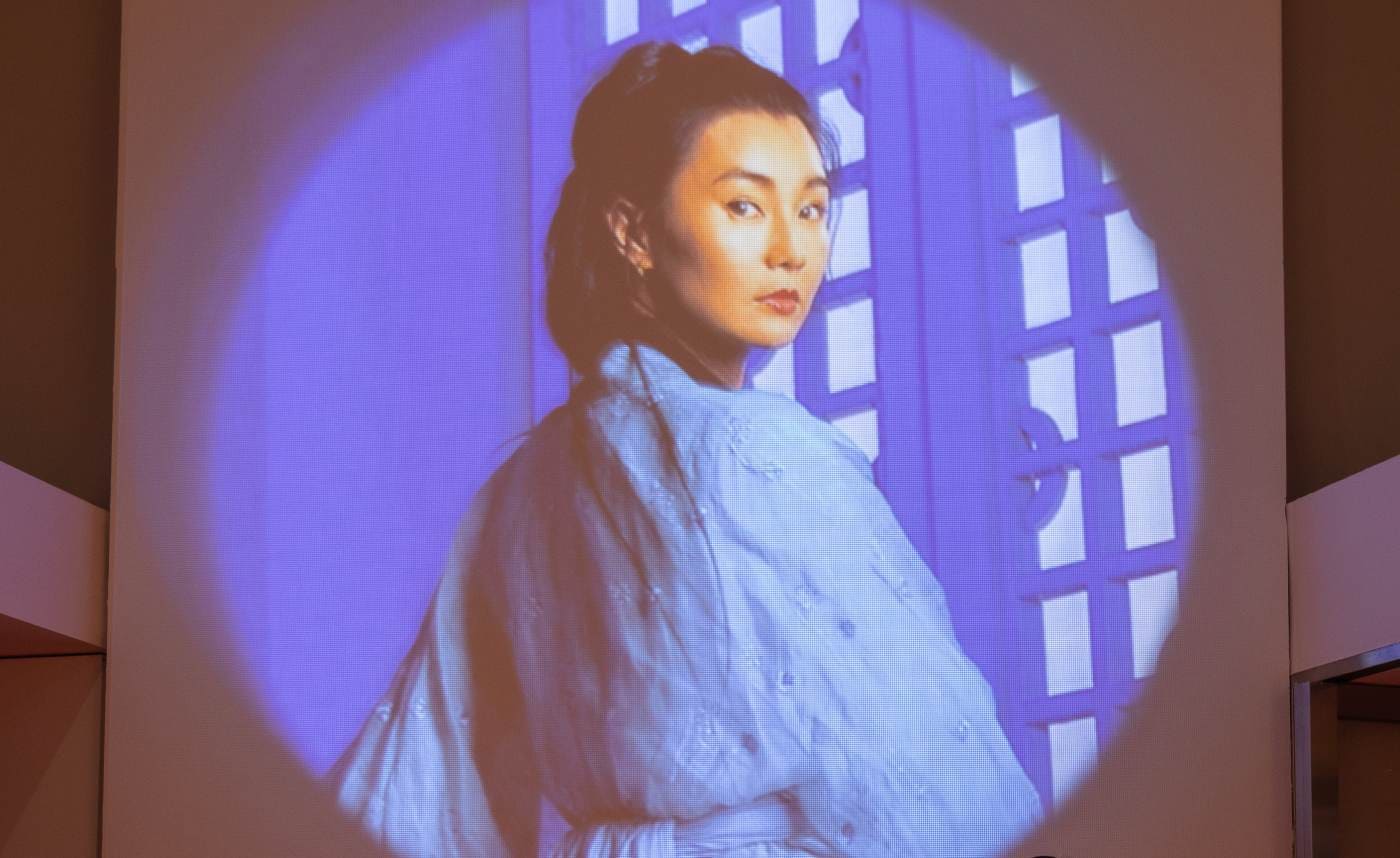 In Her Words section, Goddess exhibition.
In Her Words section, Goddess exhibition.
-
-
Crafting the Ideal
Crafting the Ideal takes a closer look at how women have been represented on screen across film history. The way films portray women reflect the social standards of the time and often establish or reinforce stereotypes. As a result, society's perceptions of beauty have been largely skewed and shaped by screen culture and mass media.
Actresses such as Marilyn Monroe, Dorothy Dandridge, Meena Kumari and Joan Chen worked hard to overturn the stereotypes and typecasting they faced across their careers. They challenged existing views and fought for agency and control, paving the way for a more open and progressive world.
One of the most well-known cultural icons is Hollywood actress Norma Jean Mortenson, best known as Marilyn Monroe. She was often typecast in roles that depicted her as a blonde bombshell and sex symbol. However, she was an accomplished businesswoman in her own right. Monroe fought back against the film studio system, renegotiated her contract for less restrictive terms and eventually formed her own production company. Celebrities such as pop singer Madonna, Australian actress Margot Robbie and model Winnie Harlow have paid homage to Monroe at different points in their careers, referencing Monroe to make statements for equal representation within the broader entertainment industry.
Featured artworks
4artworks-
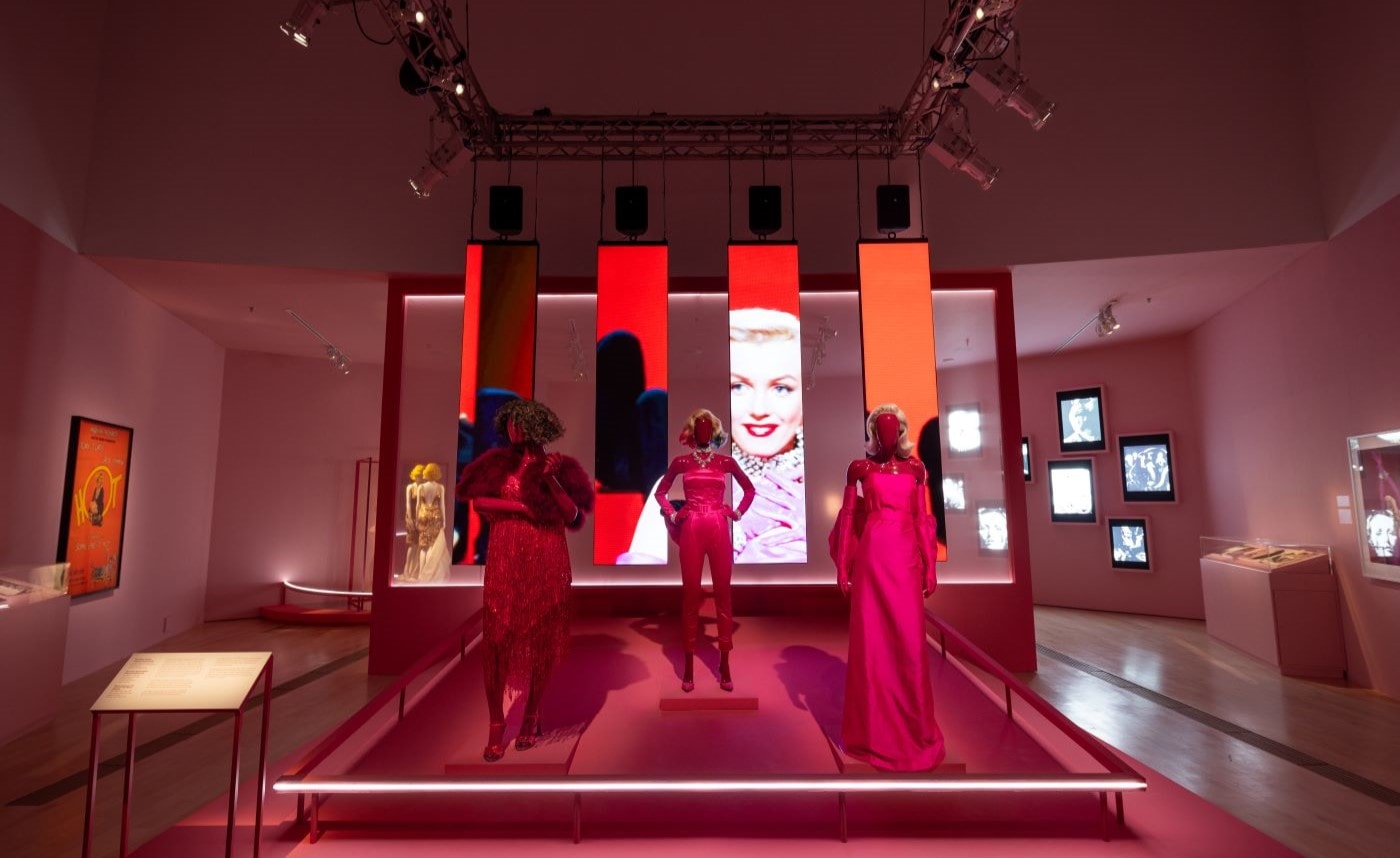 Crafting the Ideal section, Gentlemen Prefer Blondes.
Crafting the Ideal section, Gentlemen Prefer Blondes. -
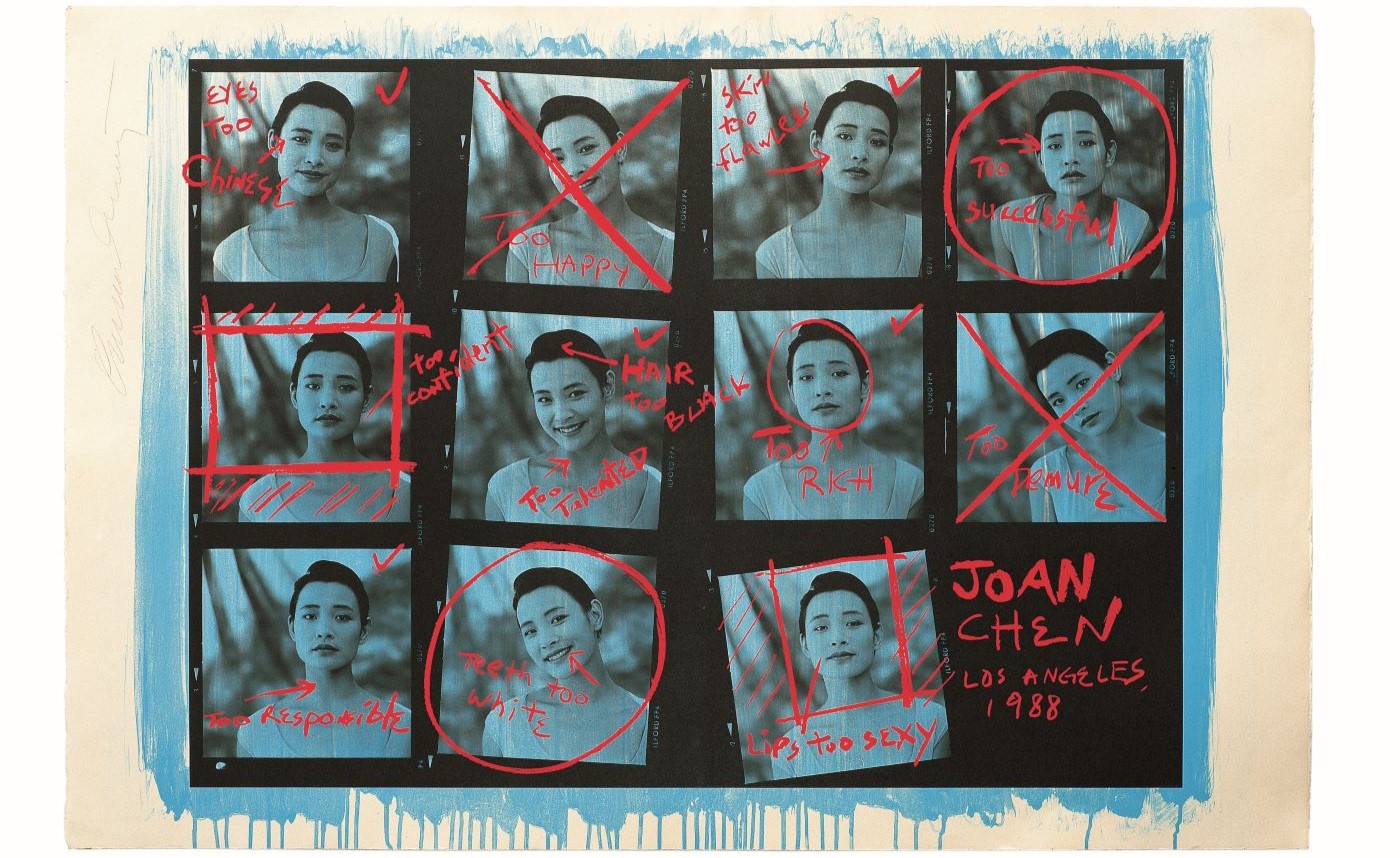 She’s Just Too... 2004. Courtesy Russel Wong.
She’s Just Too... 2004. Courtesy Russel Wong. -
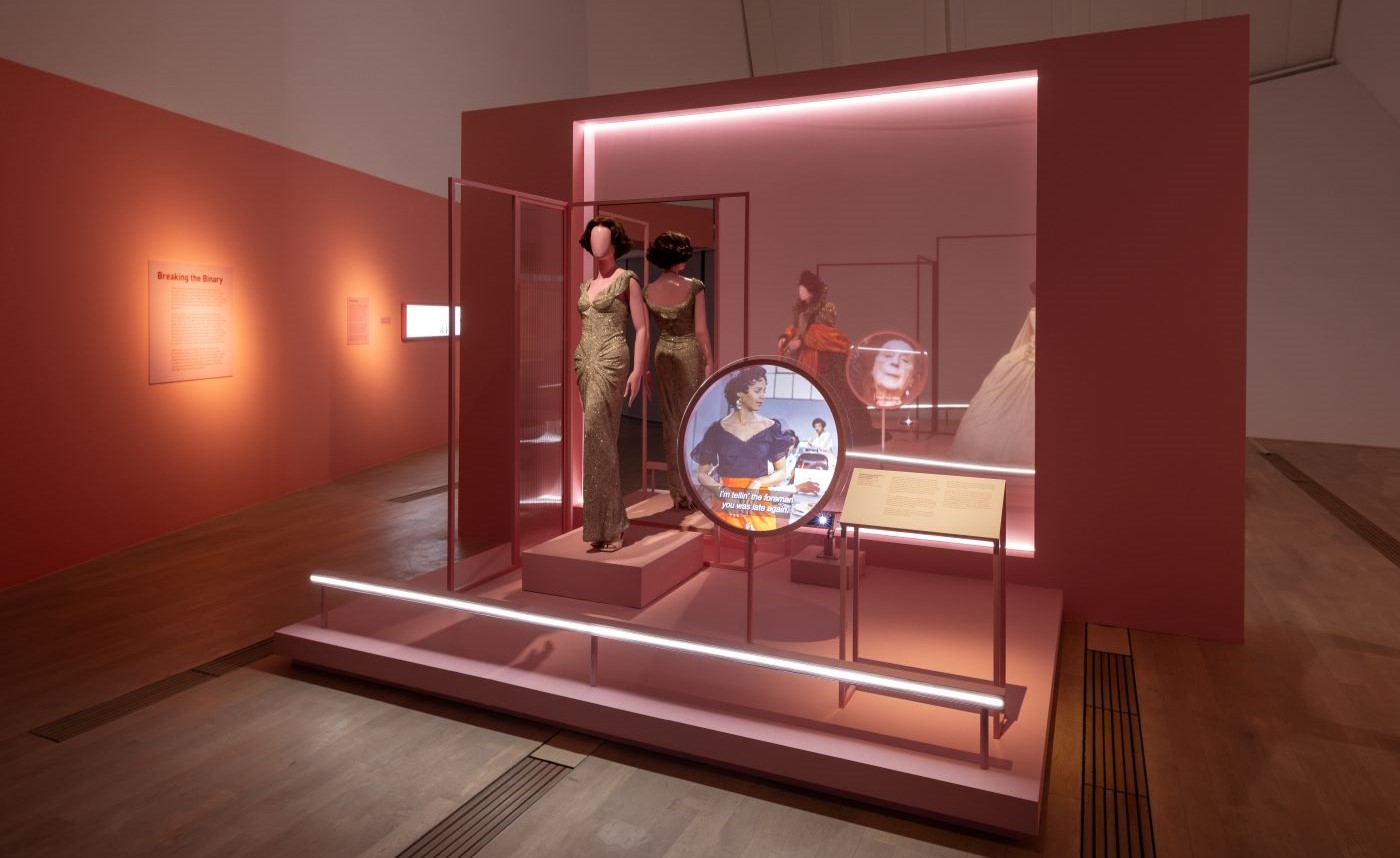 Crafting the Ideal section, Halle Berry and Dorothy Dandridge.
Crafting the Ideal section, Halle Berry and Dorothy Dandridge.
-
-
Breaking the Binary
There are many moments in film history where actresses have obviously been typecast into certain roles. Such practices served as reflections of the gender biases of broader society and reinforced stereotypes. Breaking the Binary profiles creatives who pushed back against restrictive social standards, highlighting how unnecessary such gendered roles in cinema, and in life, were and are.
In Chinese opera, it is common for individuals to play roles of the opposite gender. Cantonese opera legend Yam Kim-fai performed in over 300 films across her career, where she mainly played male roles. Actress Tilda Swinton became an arthouse icon for her dual-gender lead role in the film, Orlando (1992) directed by Sally Potter. Now a landmark work of independent cinema, the film rebelled against the traditions of British costume drama. Acting alongside Swinton was British counter-cultural icon Quentin Crisp, who took on the role of Queen Elizabeth I in a costume created by award-winning designer Sandy Powell.
Stars made a statement against gender-related norms by challenging fashion conventions and strict dress codes. German American actress Marlene Dietrich and blues musician Gladys Bentley began wearing tuxedos at a time when it was scandalous for women to even wear trousers. To this day, androgynous fashion and avant-garde designers continue to challenge social constructs of gender.
Featured artworks
4artworks-
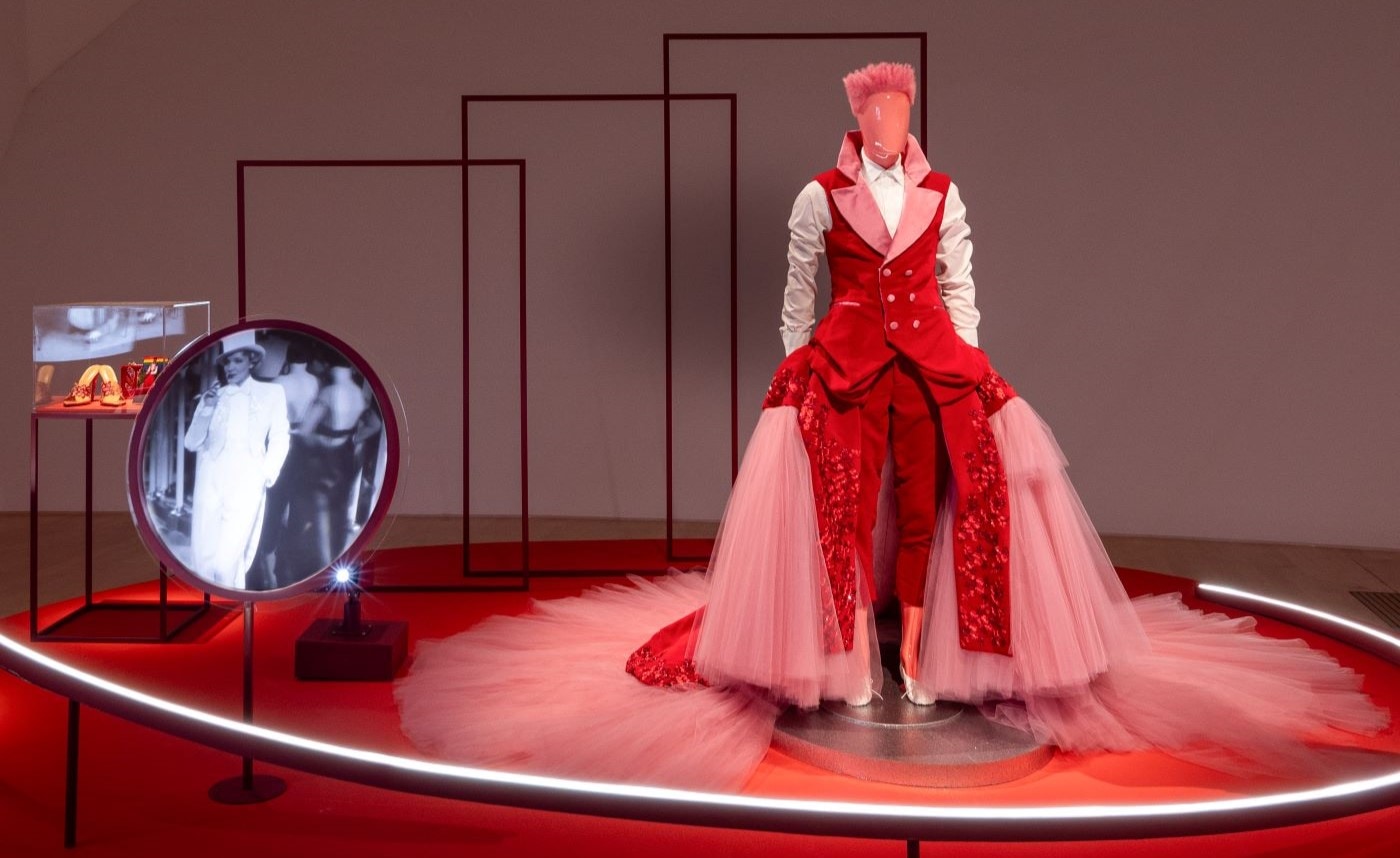 Breaking the Binary section, Billy Porter and Marlene Dietrich.
Breaking the Binary section, Billy Porter and Marlene Dietrich. -
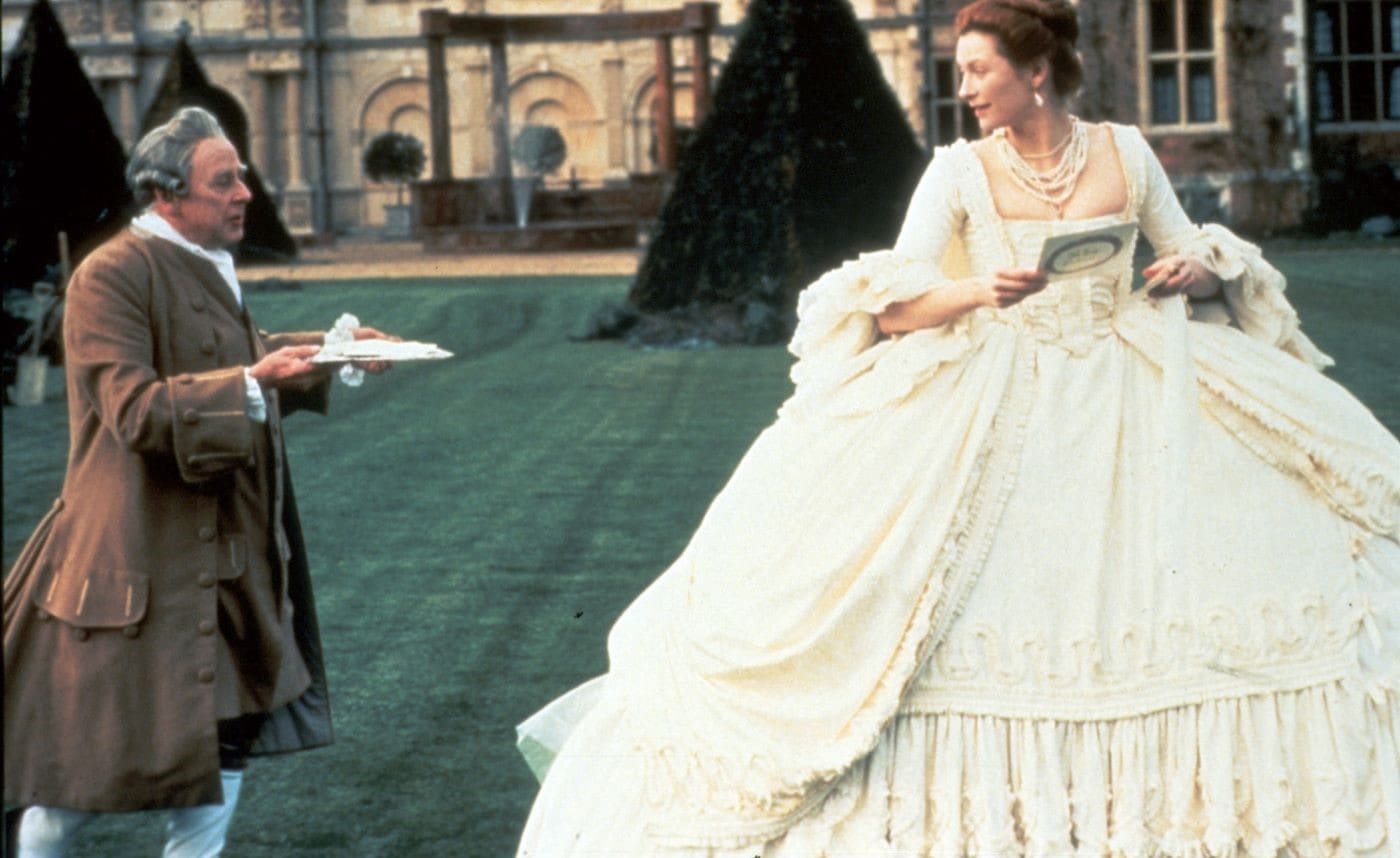 Orlando, 1992, Tilda Swinton. Image courtesy of Photo 12 / Alamy Stock Photo.
Orlando, 1992, Tilda Swinton. Image courtesy of Photo 12 / Alamy Stock Photo. -
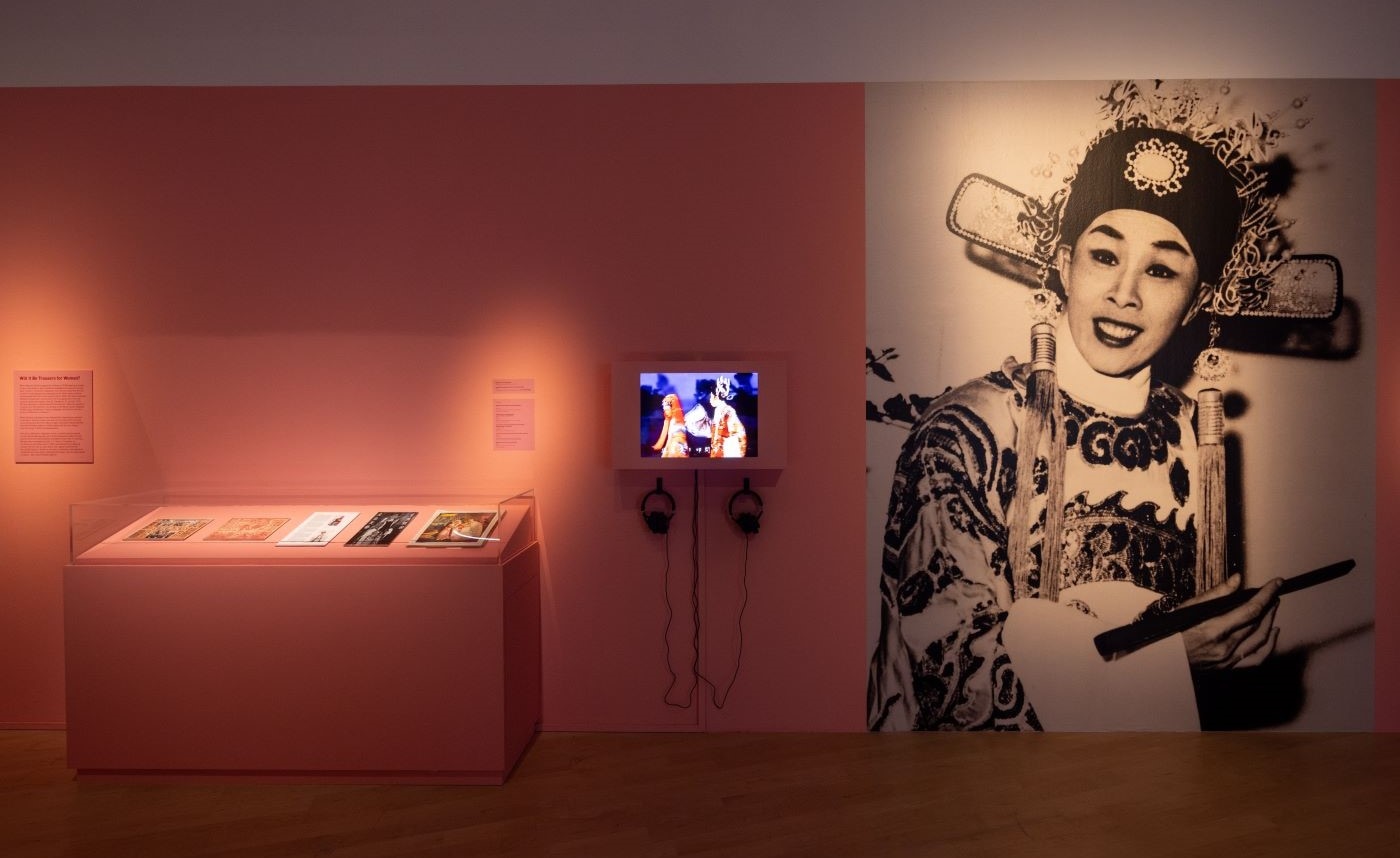 Breaking the Binary section, Yam Kim-fai.
Breaking the Binary section, Yam Kim-fai.
-
-
Dangerous Women
Dangerous Women reflects upon the way women have been portrayed negatively in film, especially when they have been seen to be different, ambitious or, simply, getting older. In the early days of Hollywood, Asian actresses were overlooked for leading film roles, they were either typecast as villainous ‘Dragon Ladies’ or subservient ‘Lotus Flowers’ who needed protection. Wong Liu Tsong, known professionally as Anna May Wong, is considered the first Chinese American Hollywood film star. She spoke out against the contrived roles she was offered and paved the way for other Asian stars such as Lisa Lu to be cast as more diverse and complex characters. Lu, known as the “Light of China,” was the first actress from the Chinese mainland to break into Hollywood. Turning 97 this year, she is an inspiring figure who continues to act today including recently in Crazy Rich Asians (2018).
The femme fatale was a character often associated with women in film, particularly in the 1940s and 50s. This role portrayed women as mysterious, seductive and often deadly. During World War II, women entered the workforce in America and, in doing so, gained newfound agency. When men returned to work after the war and tried to re-establish ‘traditional’ gender roles, the femme fatale character came to represent an unspoken fear of powerful, independent and assertive women.
While it was, and still is, acceptable for men to be seen growing old on screen, the film industry does not view ageing female actresses as kindly. Older women are often portrayed in unflattering roles, such as in campy thrillers and horror movies. Even legendary actresses such as Bette Davis and Joan Crawford found it increasingly difficult to secure roles as they got older.
Featured artworks
4artworks-
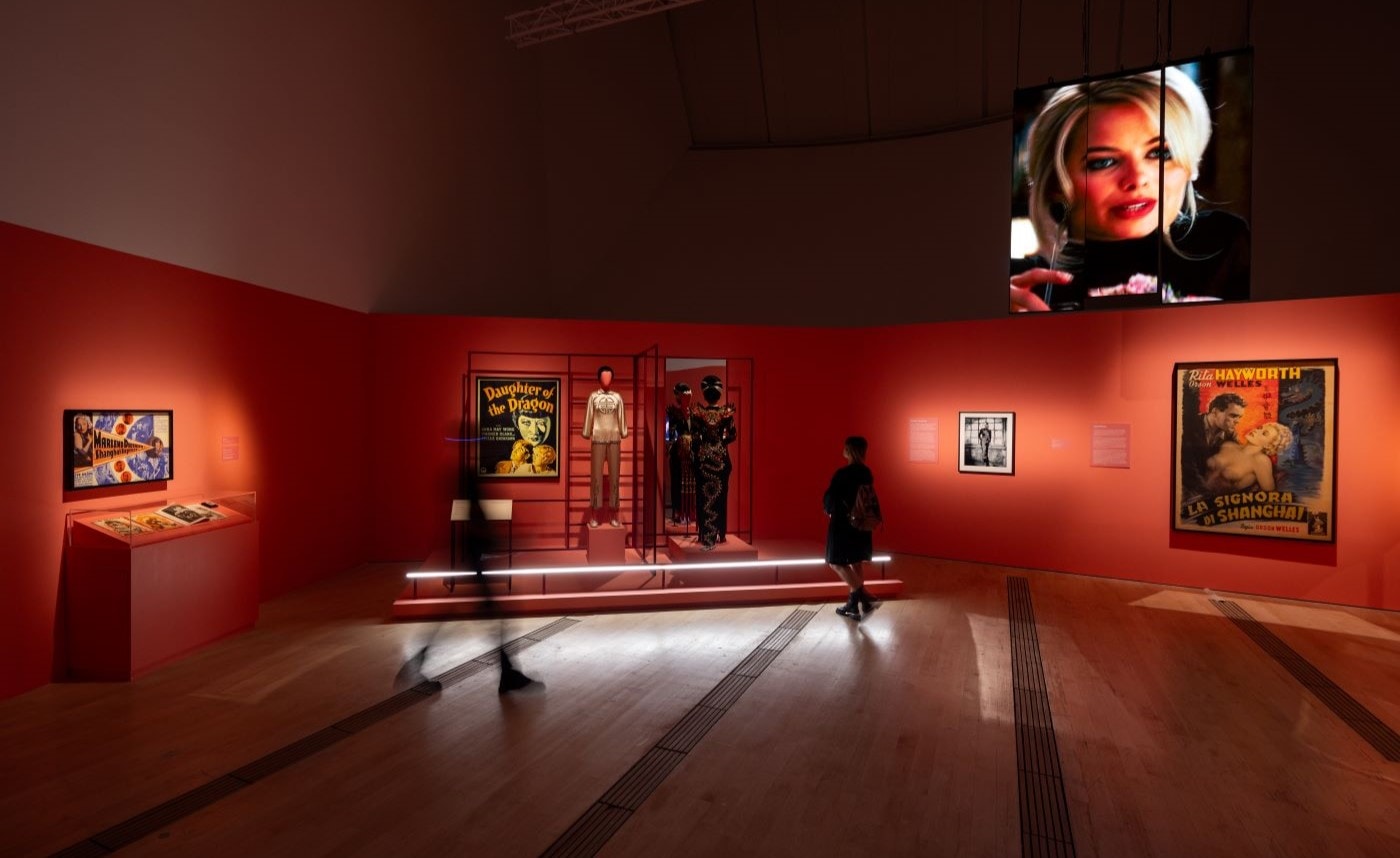 Dangerous Women section, Anna May Wong and Glenn Close.
Dangerous Women section, Anna May Wong and Glenn Close. -
 Anna May Wong, Courtesy Anna M. Wong, CPA Media Pte Ltd/Alamy Stock Photo.
Anna May Wong, Courtesy Anna M. Wong, CPA Media Pte Ltd/Alamy Stock Photo. -
 Dangerous Women section, Bette Davis and Joan Crawford.
Dangerous Women section, Bette Davis and Joan Crawford.
-
-
Weaponising Glamour
Weaponising Glamour addresses how make-up, costumes and accessories contribute to the construction of memorable on and off-screen personas. In the Hollywood golden era of film, actresses often took on hyper-feminine styles to command attention and establish influence. They then used their platforms to champion rights and address more complex social concerns.
Freda Josephine McDonald, also known as Josephine Baker, was an American-born French singer and dancer known for her unique dance style and costumes. Her fame gave her a platform, and some protection, for her to speak out against racism and discrimination. As an example, she refused to perform for segregated audiences. Her legacy inspires contemporary stars such as Zendaya, who has also called out the racism she has encountered in the film industry.
Actresses such as Mae West and Anna Tsuchiya redefined what it meant to be feminine on screen. West’s larger-than-life and confident persona shone through in her lavish costumes and platform shoes. She offered a vision of womanhood that celebrated desire as an expression of independence. Actress and rockstar Tsuchiya is known for her electrifying live performances, which defied the stereotype of Japanese actresses needing to be demure and quiet.
Chinese screen icons Tang Wei and Gong Li have both played complex characters who used their beauty, charm and intellect to manipulate others for their own purposes. These characters symbolised power and resilience, a far cry from the subservient roles more often associated with Asian actresses.
Featured artworks
4artworks-
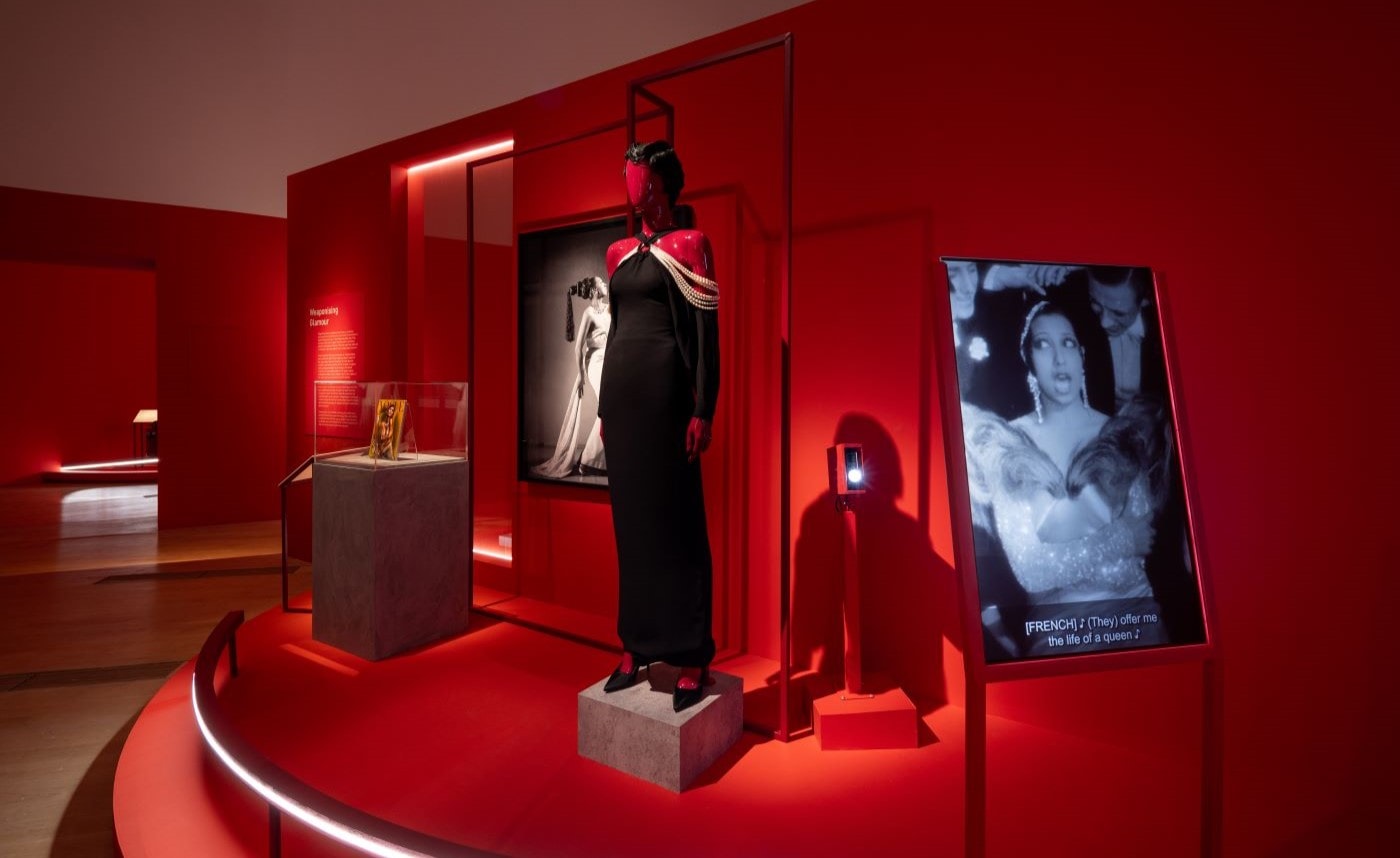 Dangerous Women section, Zendaya and Josephine Baker.
Dangerous Women section, Zendaya and Josephine Baker. -
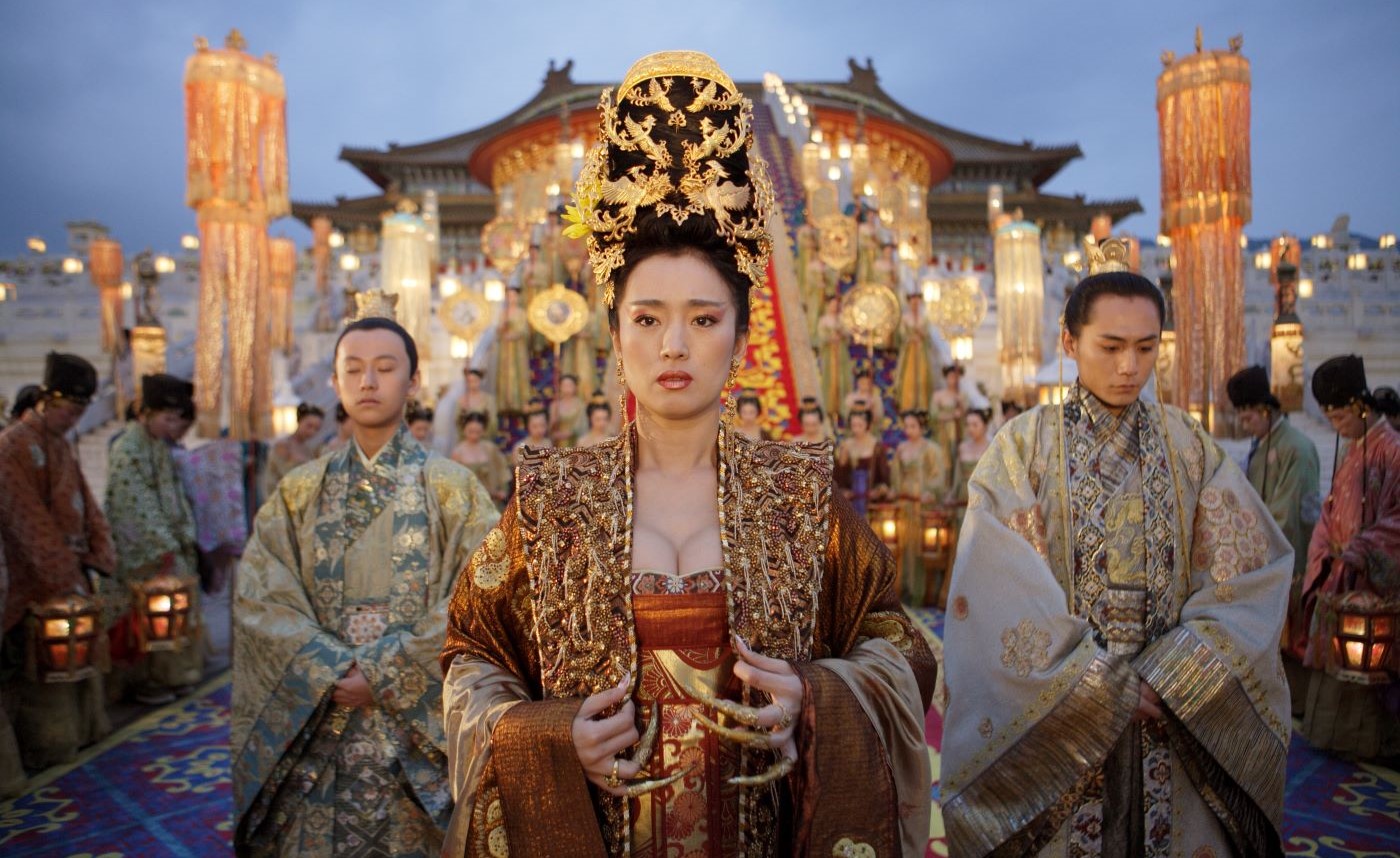 Gong Li as Empress Phoenix in Curse of the Golden Flower, 2006. Courtesy Russel Wong.
Gong Li as Empress Phoenix in Curse of the Golden Flower, 2006. Courtesy Russel Wong. -
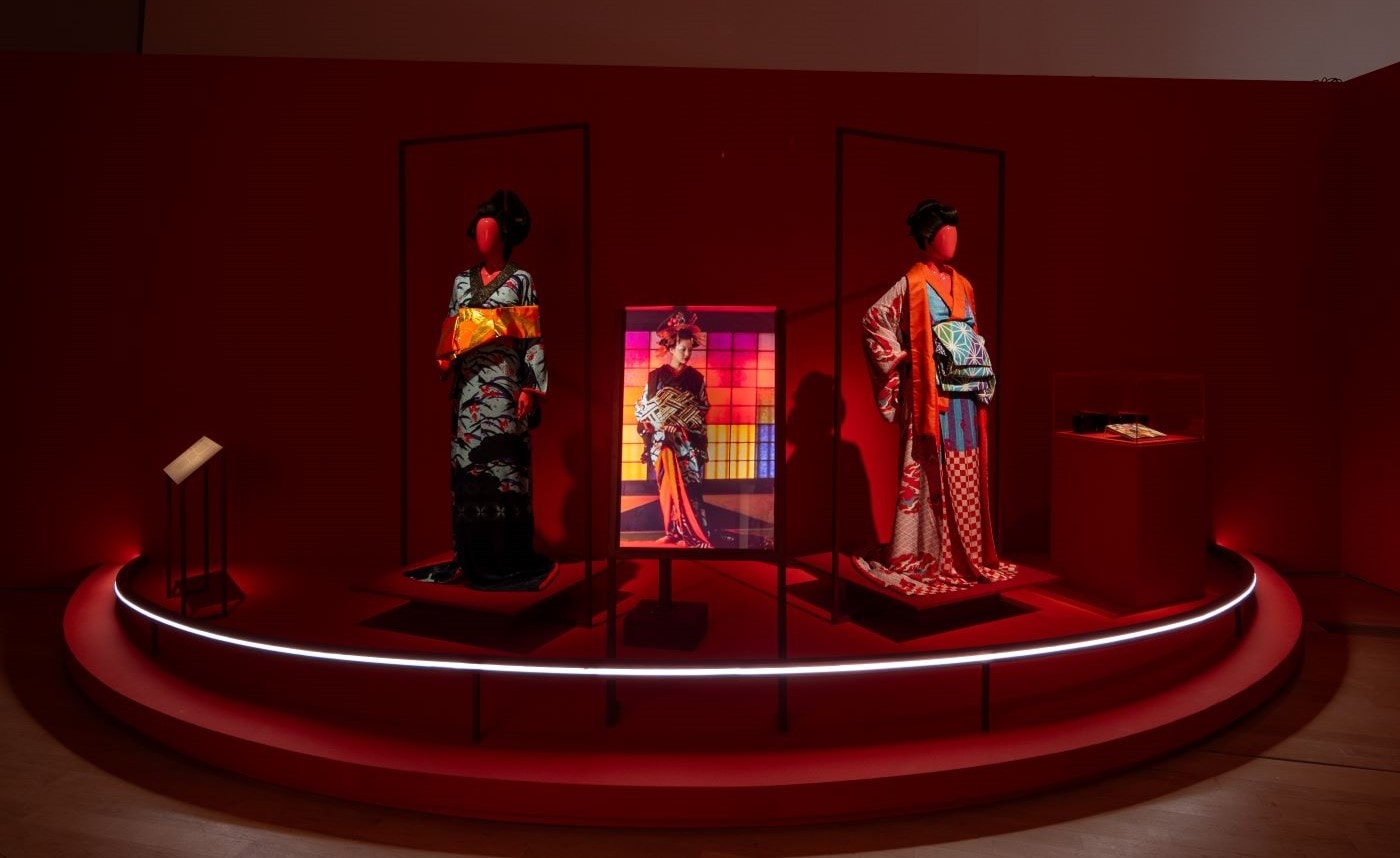 Dangerous Women section, Sakuran (2006).
Dangerous Women section, Sakuran (2006).
-
-
Cut from the Same Cloth
Cut from the Same Cloth profiles three film icons of the golden age of Malay cinema in Singapore, which lasted from the 1940s to the 1970s: Saloma, Maria Menado and K. Fatimah. On screen, they played progressive characters who signalled the changing socio-cultural values of the time. From being financially independent to forming alliances and challenging gender-based norms, their characters demonstrated that women could dream bigger and bolder.
Many films with strong female characters were developed by the Malay Film Productions Limited (MFP) studio in Singapore. MFP was part of the Shaw Brothers film empire which, together with Cathay-Keris Productions, produced hundreds of films during the golden age of Malay cinema. A flourishing of cultural and intellectual life in Singapore at the time meant progressive and ambitious ideals found their way into films.
Off-screen, these multi-talented actresses established themselves in other creative fields like music, fashion and business. K. Fatimah was a beauty queen. Indonesian actress and model Maria Menado went from being in front of the camera to behind it, founding her own production company. Salma Ismail, better known as Saloma, was awarded the title of Biduama Pertama Negara (First National Songbird) in 1978 for her contributions to the Malay music industry. A fashion icon, she even had a modern style of kebaya, a traditional Southeast Asian upper garment, named after her.
Featured artworks
4artworks-
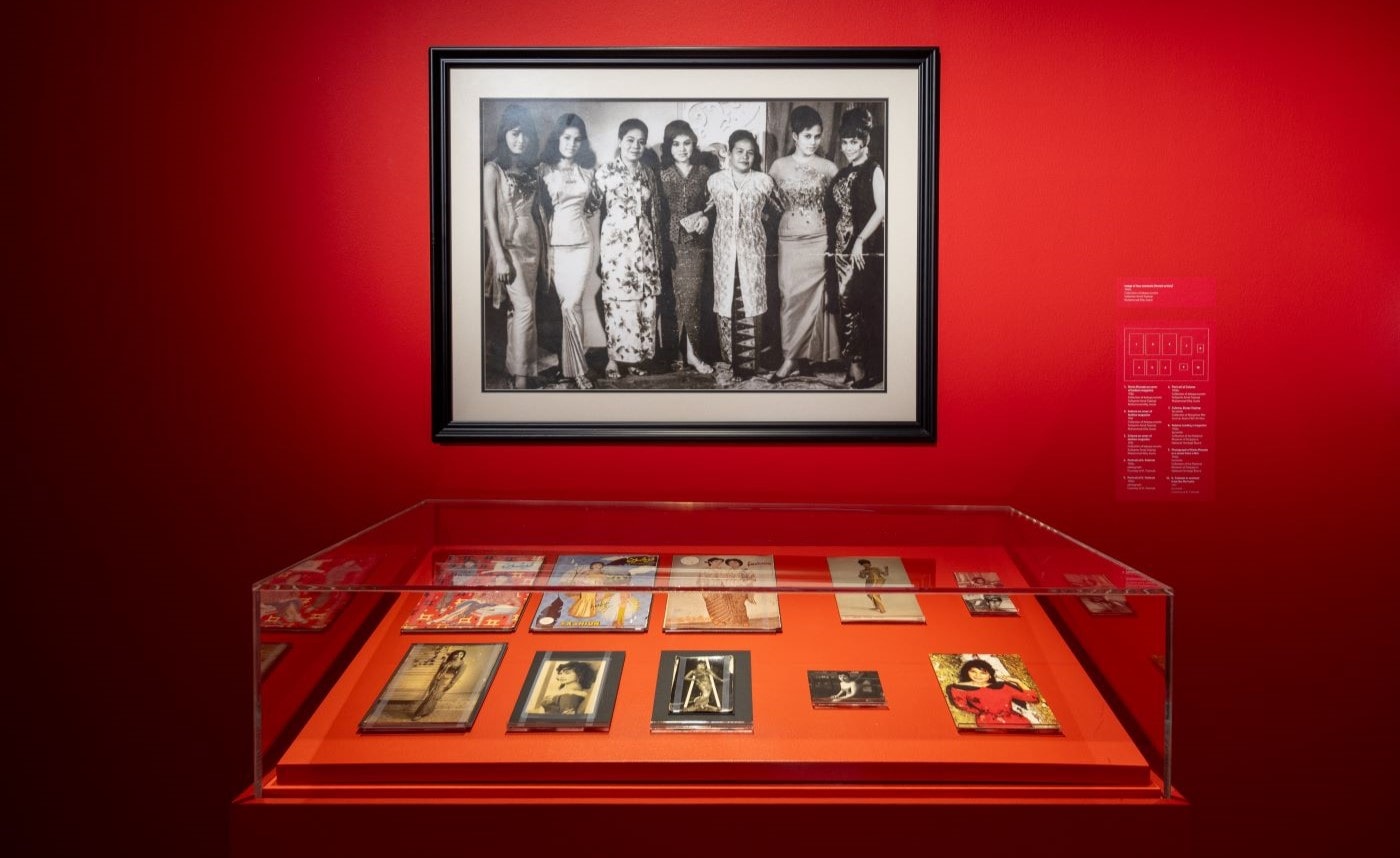 Cut from the Same Cloth section, Maria Menado, K. Fatimah and Saloma.
Cut from the Same Cloth section, Maria Menado, K. Fatimah and Saloma. -
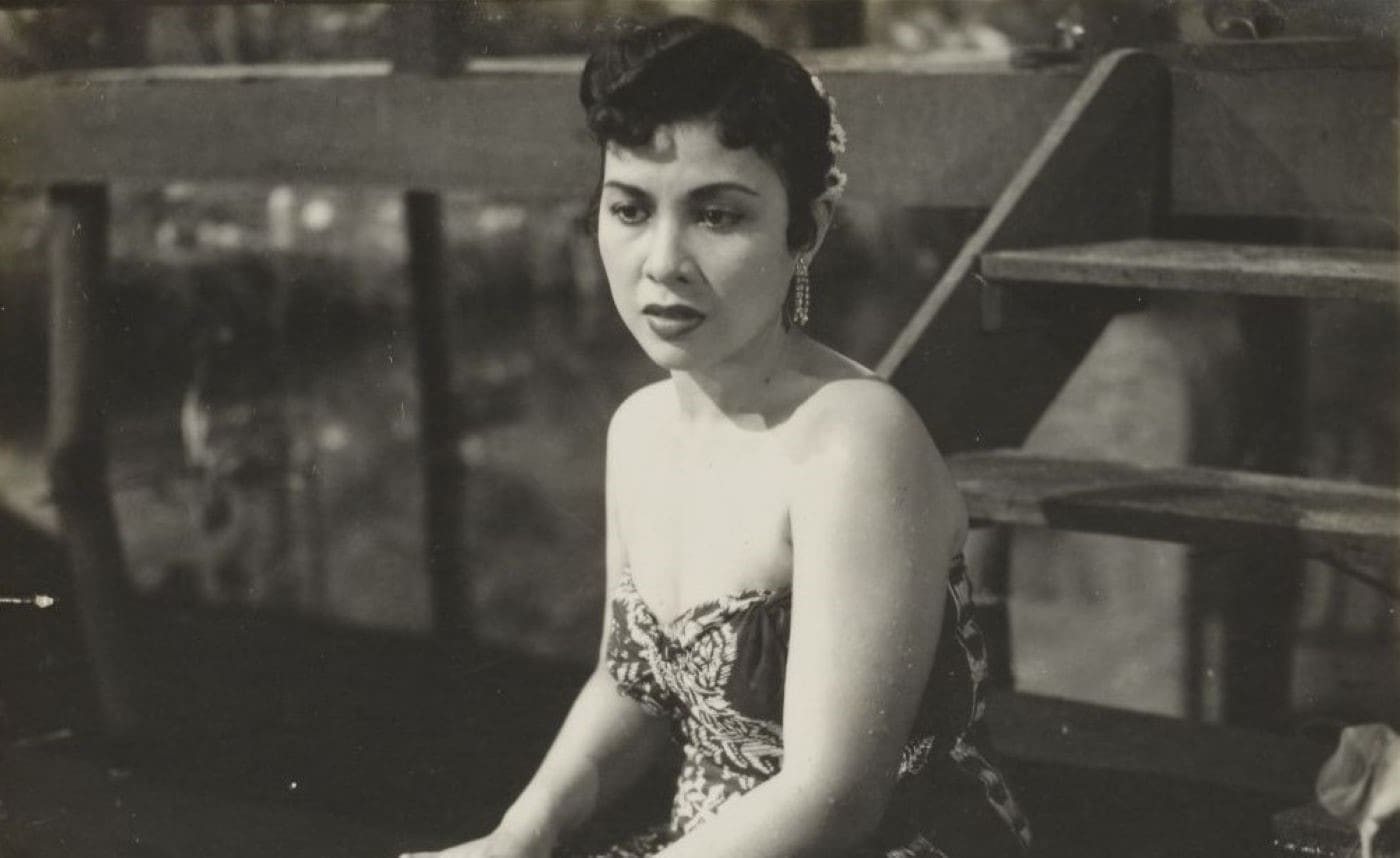 Photograph of Maria Menado in a scene from a film, 1960s. Collection of the National Museum of Singapore, National Heritage Board.
Photograph of Maria Menado in a scene from a film, 1960s. Collection of the National Museum of Singapore, National Heritage Board. -
 Cut from the Same Cloth section, K. Fatimah and Saloma.
Cut from the Same Cloth section, K. Fatimah and Saloma.
-
-
Fighting Back
Fighting Back details the daring physical feats of actresses on screen, from classic stuntwomen to today’s action heroes. It also profiles the forming of alliances between female characters to push back against injustice. Examples include the protagonists in films like Thelma & Louise (1991), played by American actresses Geena Davis and Susan Sarandon. After a violent assault in the film, both women banded together and became fugitives, as the authorities would not believe their story.
The Blaxploitation era of 1970s America saw Black actresses like Pam Grier packing a punch and taking on lead action roles. These films fought back against racial injustice, echoing the Black Power and women’s rights movements of the time. The Blaxploitation genre of films inspired Asian directors, as shown in the film They Call Her… Cleopatra Wong (1978) which starred Singaporean actress Doris Young. Both Young and fellow Singaporean, Fann Wong, played fierce and fabulous action heroines. They presented women as strong and independent, countering early film depictions of women being fragile.
Martial arts films from Asia have captivated audiences around the world, crossing over into the West. Wuxia, a genre of film that explores the adventures of martial artists in ancient China, has proven to be particularly popular. These films often showcase female power through the depiction of women warriors, such as the characters played by Zhang Ziyi and Maggie Cheung in Hero (2002).
Early wuxia films featured Chinese actress Cheng Pei Pei, known as the ‘Queen of Wuxia.’ Cheng inspired other female stars like celebrated Malaysian actress Michelle Yeoh, who won the Oscar for Best Actress in 2023 for Everything Everywhere All at Once (2022). Yeoh began her career in martial arts roles and performed her own stunts. In Police Story 3: Super Cop (1992), she even pulled off a motorcycle jump from a road onto a moving train!
Featured artworks
4artworks-
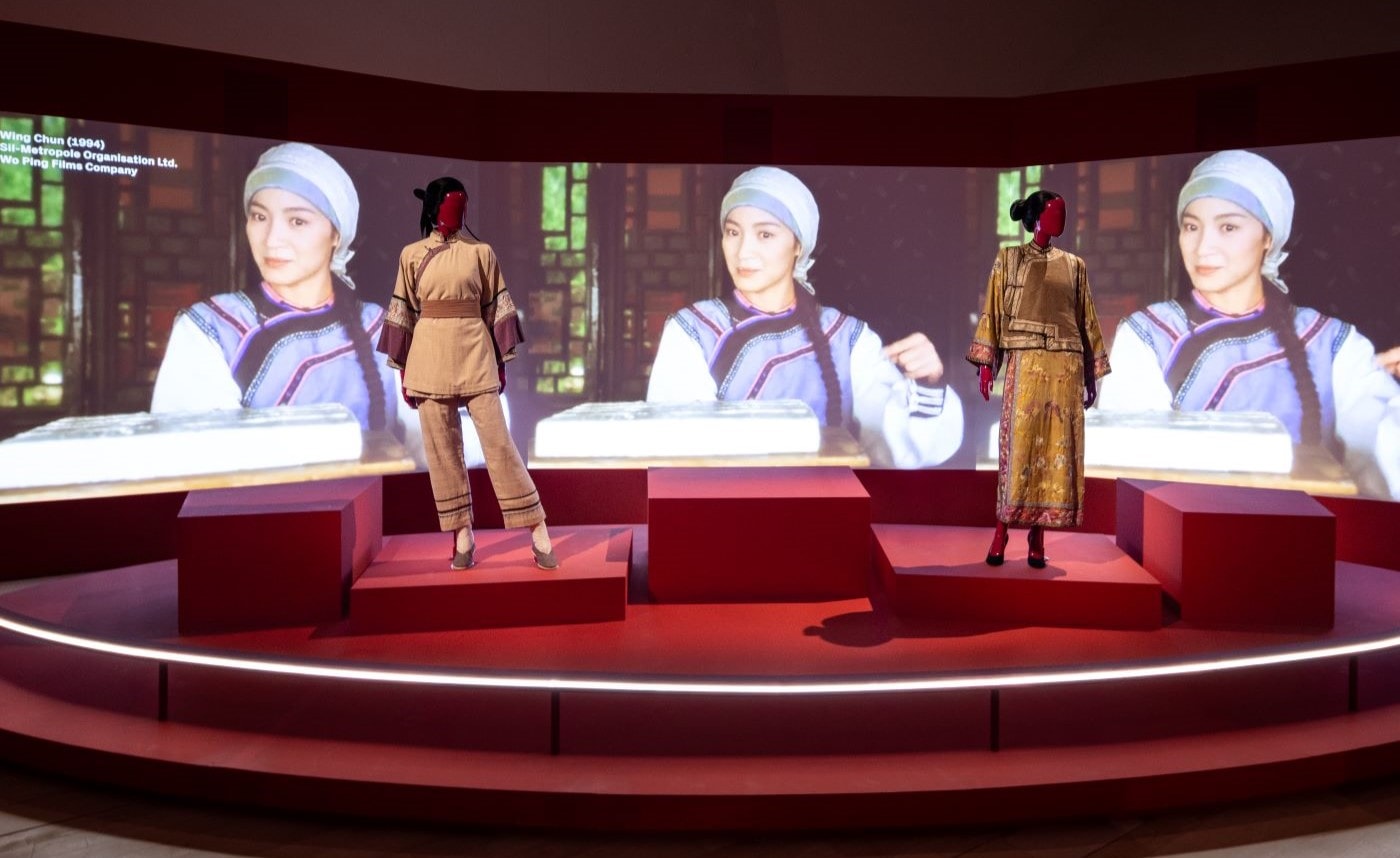 Fighting Back section, Michelle Yeoh and Zhang Ziyi.
Fighting Back section, Michelle Yeoh and Zhang Ziyi. -
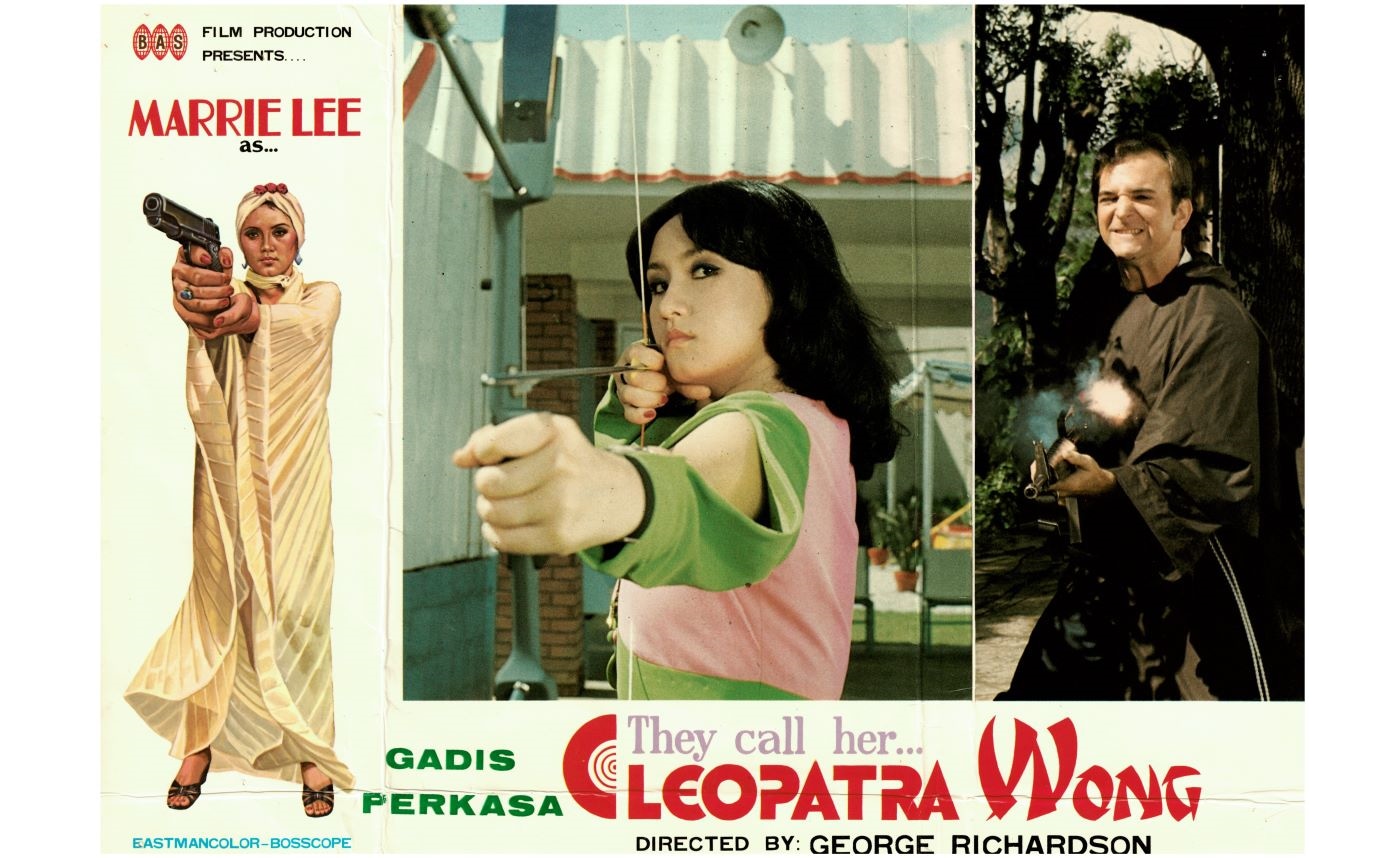 Lobby card for They Call Her... Cleopatra Wong, 1978. Courtesy Doris Young / Marrie Lee.
Lobby card for They Call Her... Cleopatra Wong, 1978. Courtesy Doris Young / Marrie Lee. -
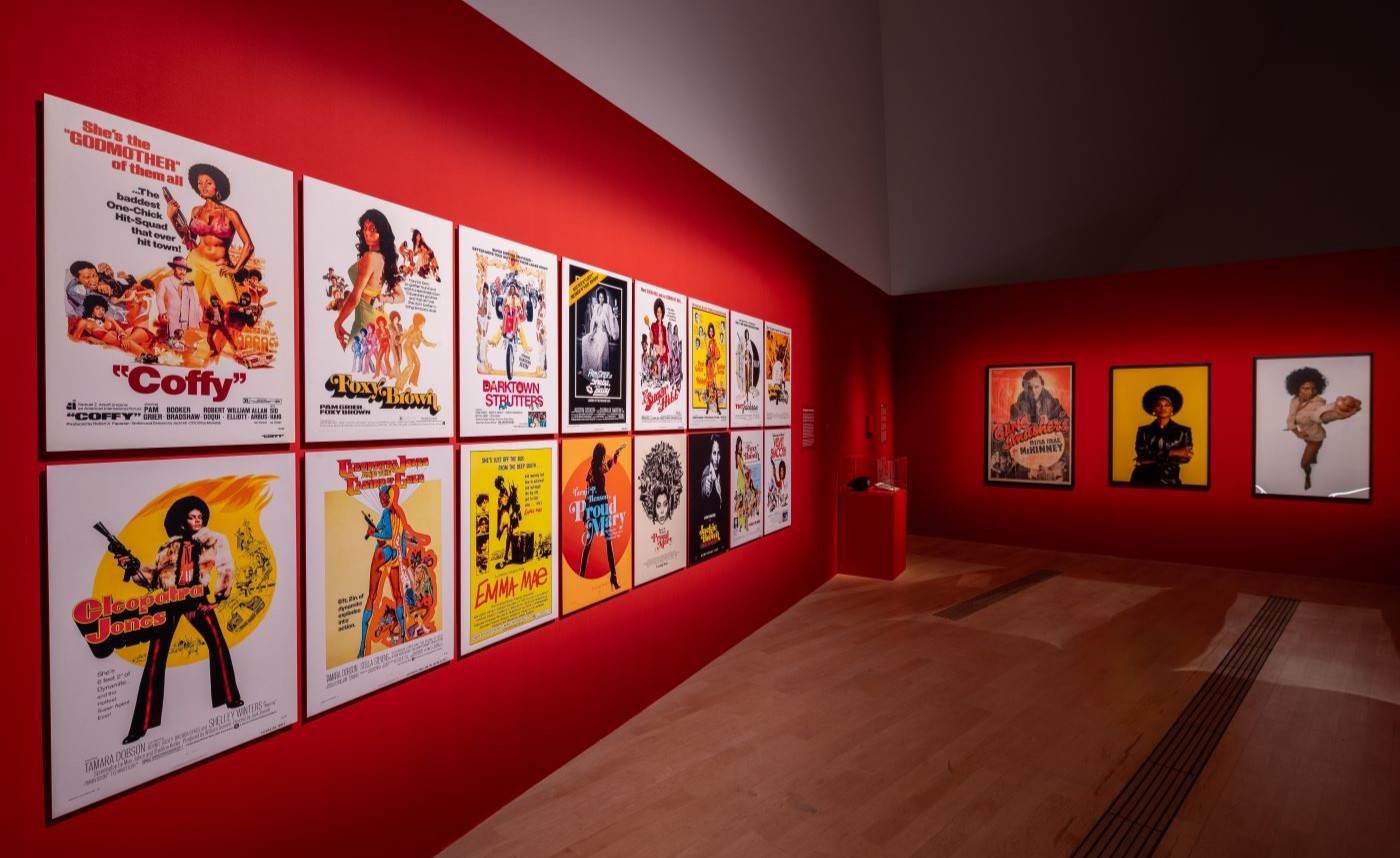 Fighting Back section, Blaxploitation.
Fighting Back section, Blaxploitation.
-
-
Walk out with a Goddess
When the characters on these screens walk away, it’s an act of defiance—not surrender. In Gentlemen Prefer Blondes (1953), Marilyn Monroe’s character asserted her control over men when she pulls the door closed and says, “Don’t say another word.” Cheerleader Torrance Shipman played by American actress Kirsten Dunst in Bring It On (2000) declared a barbed “buhbye” when she dropped the boyfriend who’d been holding her back.
The power of women’s voices extending into professional spaces manifests in American TV series Mad Men (2007), when actress Elisabeth Moss’s character tells her boss “Don’t be a stranger” and proves that she has surpassed him. In turn, the icy “Go” from actress Meryl Streep as powerful fashion magazine editor Miranda Priestly in The Devil Wears Prada (2006) cuts like broken glass ceilings.
These women seen in film and on TV are in dialogue, backing each other and backing themselves. When they walk away, they’re transformed. In Cruel Intentions (1999), actress Reese Witherspoon’s character Annette leaves behind toxicity, while the character of Fleabag played by actress Phoebe Waller-Bridge in British comedy series Fleabag (2016) walks away from the past. “Goodbye” is a new beginning, slamming a door is taking a stand.
Whether these goddesses have defied gender expectations or racial discrimination and pushed back against those who tried to control them, they have collectively stood up, raised their voices and reclaimed their story. By embodying resilience, courage, talent and strength, these screen icons possess inspiring qualities that are relevant to us all.
Featured artworks
4artwork-
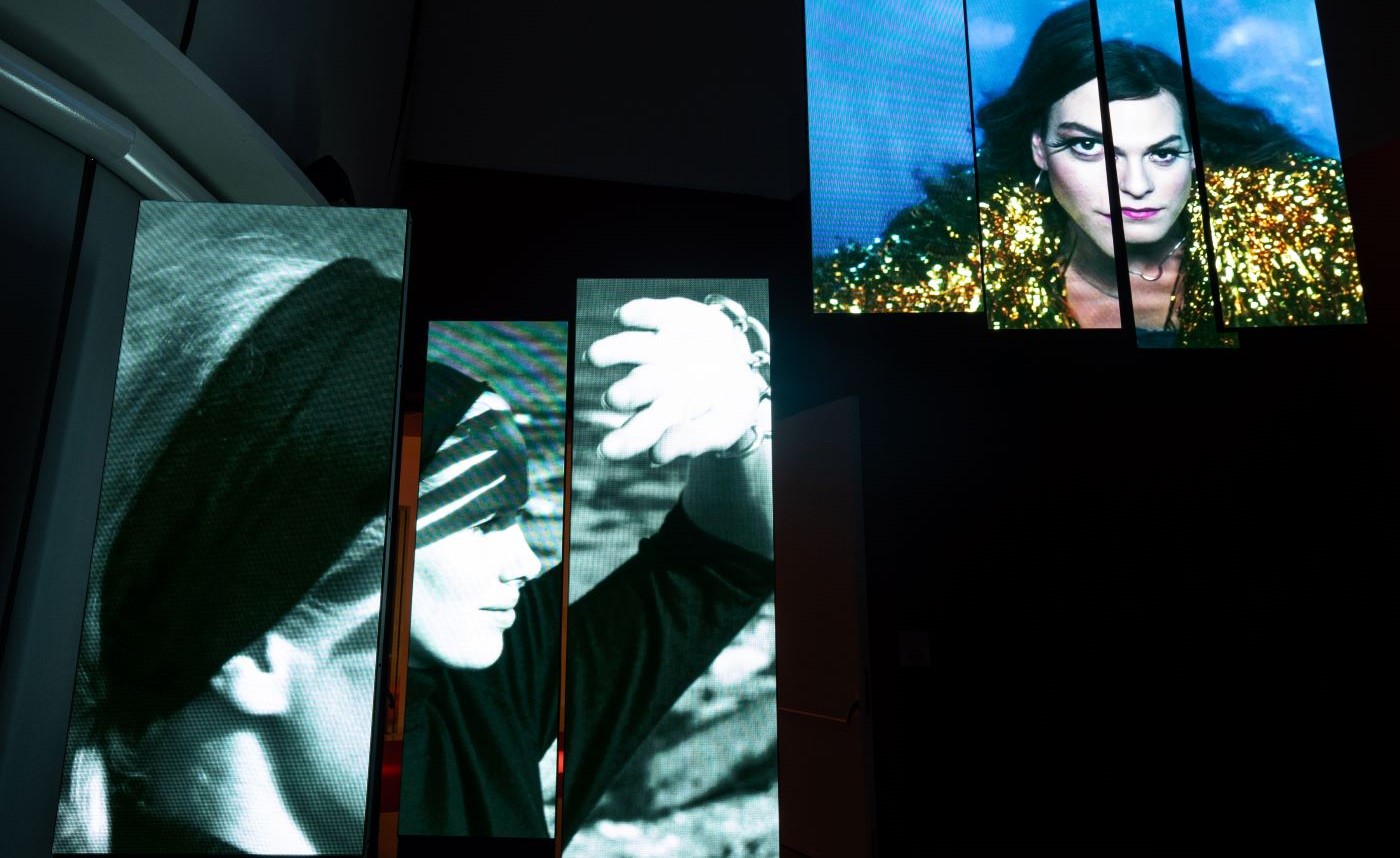 Walk out with a Goddess section.
Walk out with a Goddess section.
-

Complimentary Entry for Kids!
Kids below 12 years old enter for free with every adult ticket purchased.
Terms & Conditions apply

Film Screenings
ArtScience Cinema, Level 4
Mix of free and ticketed admission
Expanding from the exhibition Goddess, ArtScience Cinema celebrates the extraordinary leading ladies of Hollywood and contemporary cinema through free screenings and film programmes across the exhibition’s run.See more

DIVINE
7 – 30 Jun
Oldham Theatre
Presented by Asian Film Archive, DIVINE is a response to ArtScience Museum's exhibition Goddess: Brave. Bold. Beautiful. This film programme takes you on a journey exploring how the feminine form is worshipped and feared in various cultures.
See moreOpening Programmes
- Opening Symposium
- Guided Tours
- Activities
-
Goddess Opening Symposium
6 Apr (Sat), 2pm
ArtScience Cinema, Level 4
Ticketed admission: S$10
Organised in conjunction with the launch of Goddess at ArtScience Museum, the opening symposium explores the screen goddess as a complex archetype that transcends gender binaries and continues to evolve.
The programme engages with curators, archivists and artists to consider developing debates and inclusive narratives in gender, media and culture. It also spotlights the articulate, powerful and generous vision of women directors in Singapore, bringing them into a conversation on redefining representation in filmmaking.
Speakers include Bethan Johnson (Curator at ACMI), Russel Wong (Photographer), Sufiyanto Amat Sopingi (Fashion Designer and Couturier), Viknesh Kobinathan (Film Programmer at Asian Film Archive) as well as filmmakers Tan Pin Pin, Eva Tang, Li Lin Wee, Wong Chen-Hsi, Olivia Griselda, and more.
View details
Buy tickets
-
Weekly, 4pm
A picture speaks a thousand words, while a thread tells a thousand tales.
In this tour, be prepared to be starstruck as you step into Goddess with our Education Specialist to learn about how iconic costumes and artefacts defined and defied the history of women in film.
View details -
Take Your Skills High-ya!
A Stunt Masterclass
28 Apr, 2.30pm – 5.30pm
Rainbow Room, Basement 2
Ticketed admission: S$68/pax or $120/pair
In this three-hour session taught by stunt professionals from Ronin Action Group, learn the tricks of the trade as a professional stunt performer teaches you how to pose, strike and guard!
At the end of the session, put your acting chops to the test and execute a choreographed stunt sequence.
View details
Sarong Styles
Drop-in
Weekdays, from 8 Apr – 3 May
Basement 2, Circulation Space
Event is complimentary
Find out more about the Malay sarong and the different ways it can be personalised to suit your style in this drop-in activity. Try your hand at tying a sarong with the simple instructions provided.
View detail
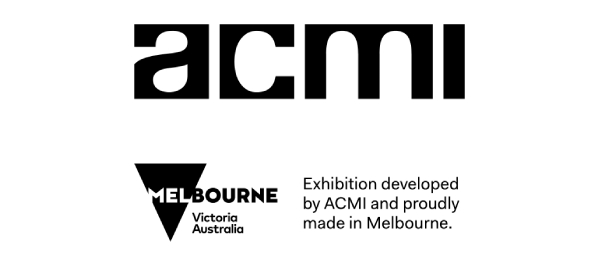
Our Partners
ACMI
See more
Offers
You May Also Like
-
EXHIBITION
Future World:
Where Art Meets ScienceFuture World: Where Art Meets Science at ArtScience Museum is currently closed for revamp works. We apologise for any inconvenience caused.
Immerse yourself in a world of art, science, magic and metaphor through a collection of digital interactive installations.
-
-



